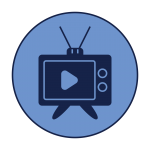 Ok, so now you’re an Apple Developer and you’ve got the SDK installed. Great.
Ok, so now you’re an Apple Developer and you’ve got the SDK installed. Great.
At least it was until you opened one of the applications in the SDK and realized you had no idea what to do next.
Here’s what you can do next: learn how to use the iOS SDK to make iPhone apps.
It’s true that it’s a complex process, but there are some truly excellent resources out there for you.
The best place to start is Lynda.com. Don’t forget that if you’re an American university student you’ll need to log into Lynda via the Technology link on the portal. What you want to look for is “iPhone SDK Essential Training” by Simon Allardice. He begins with a bit of history and explains the development of the iPhone OS. He then segways into some simple tutorials in Objective-C, the programming language used to create iPhone apps, and finally shows users how to create a number of useful interfaces which can be applied to a wide variety of app ideas. Really excellent.
Once you have a basic grasp of the tools and concepts used to create iPhone apps, it’s time to go to Stanford. Yes, Stanford. For the past few years they have been running an iPhone development course in their school of engineering and it’s available FREE on the iTunes U site. Here is the latest version of the course from the Winter of 2010. Clicking on the link with open iTunes.
This is another college course on iPhone development from UC Davis. It’s a bit different from Stanford’s, but still very easy to follow and understand.
Additionally, there are a TON of resources on Apple’s developer site and one I recommend highly is the Primer on Objective-C. It’s a text document, but well worth reading.
Once you’ve got the basics down it’s time to move on. If you’ve never programmed before it might be worth your time to check out Step 2.5. If you find you’re comfortable with Objective-C, move on to Step 3.
